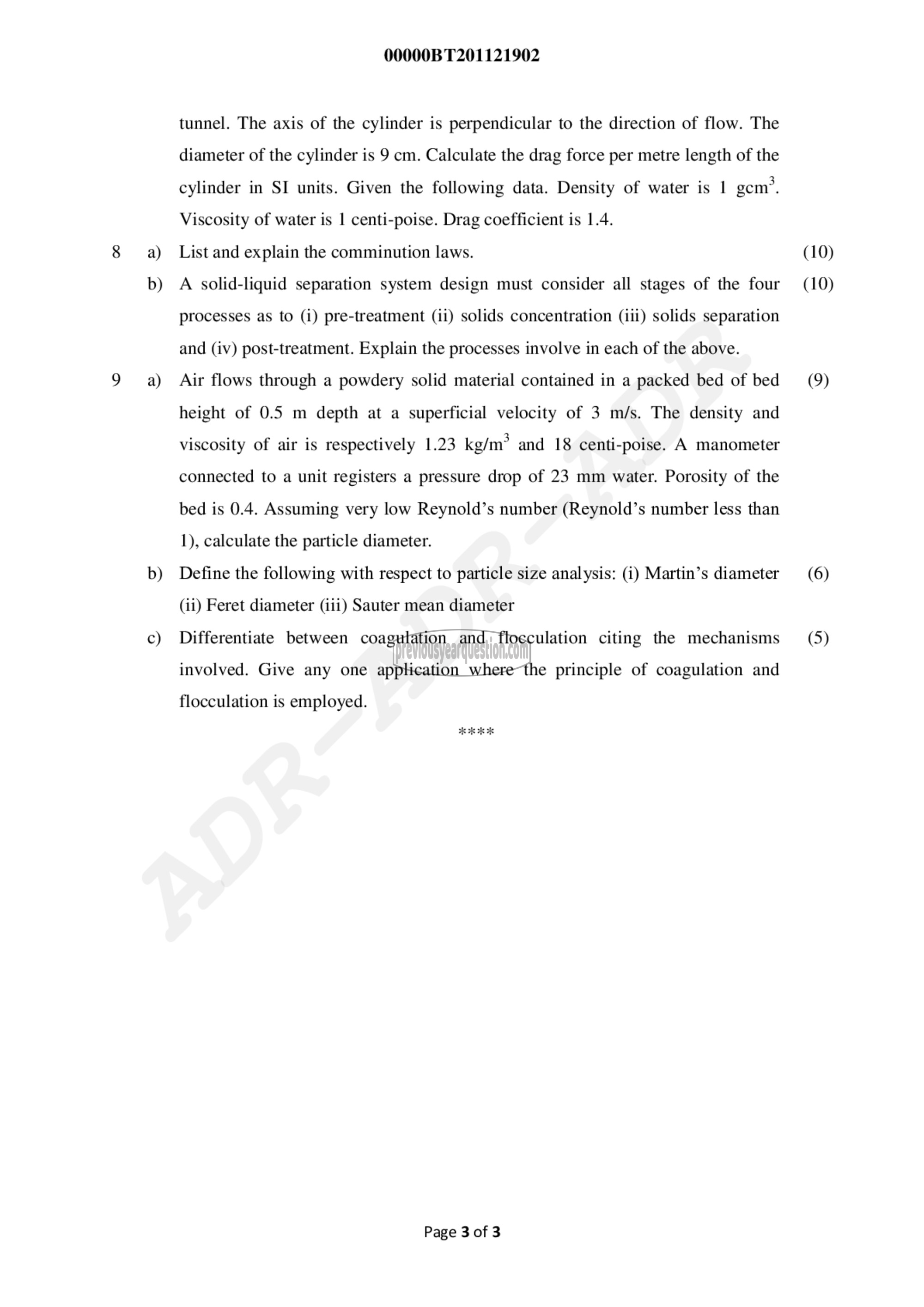APJ ABDUL KALAM TECHNOLOGICAL UNIVERSITY Previous Years Question Paper & Answer
Semester : SEMESTER 3
Subject : Fluid Flow and Particle Technology
Year : 2020
Term : SEPTEMBER
Branch : BIOTECHNOLOGY
Scheme : 2015 Full Time
Course Code : BT 201
Page:3
a)
a)
b)
௦)
00000BT201121902
tunnel. The axis of the cylinder is perpendicular to the direction of flow. The
diameter of the cylinder is 9 cm. Calculate the drag force per metre length of the
cylinder in SI units. Given the following data. Density of water is 1 ന്ന് ⋅
Viscosity of water is 1 centi-poise. Drag coefficient is 1.4.
List and explain the comminution laws.
A solid-liquid separation system design must consider all stages of the four
processes as to (i) pre-treatment (ii) solids concentration (iii) solids separation
and (iv) post-treatment. Explain the processes involve in each of the above.
Air flows through a powdery solid material contained in a packed bed of bed
height of 0.5 m depth at a superficial velocity of 3 m/s. The density and
viscosity of air is respectively 1.23 kg/m?
and 18 centi-poise. A manometer
connected to a unit registers a pressure drop of 23 mm water. Porosity of the
bed is 0.4. Assuming very low Reynold’s number (Reynold’s number less than
1), calculate the particle diameter.
Define the following with respect to particle size analysis: (i) Martin’s diameter
(ii) Feret diameter (iii) Sauter mean diameter
Differentiate between coagulation and flocculation citing the mechanisms
involved. Give any one application where the principle of coagulation and
flocculation is employed.
Page 3 of 3
(10)
(10)
(9)
(6)
(5)
